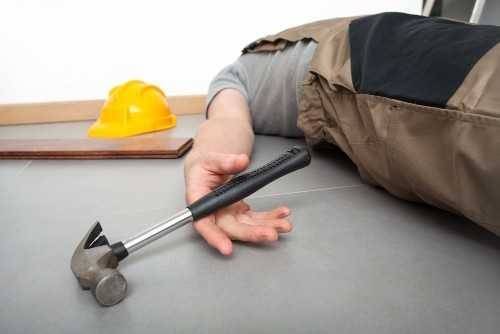Falls are one of the most common causes of injuries and fatalities on construction sites. In Oklahoma, construction sites are no exception to this and falls continue to be a significant risk for workers. However, with the right precautions, falls can be prevented, and workers can stay safe. In this blog post, we will discuss some of the measures that can be taken to prevent falls on construction sites in Oklahoma.
Training
One of the most critical measures to prevent falls on construction sites is proper training. Workers should be trained on the hazards associated with their tasks, including the risk of falls. This training should include information on how to properly use personal protective equipment (PPE) such as harnesses, lanyards, and safety nets. Workers should also be trained on the proper techniques for working at height and how to identify and avoid fall hazards.
Use of Personal Protective Equipment (PPE)
PPE is an essential element in preventing falls on construction sites. Workers should always wear the appropriate PPE, including hard hats, safety glasses, and footwear with slip-resistant soles. In addition, workers who are working at height should wear fall protection equipment, such as a harness and lanyard, and should be anchored to a secure point.
Inspection and Maintenance of Equipment
Equipment such as ladders, scaffolding, and other elevated work platforms should be inspected and maintained regularly to ensure their safety. Employers should have a program in place to inspect and maintain all equipment used on the construction site. This program should include regular inspections by trained personnel and timely repairs or replacement of damaged equipment.
Housekeeping
Proper housekeeping practices can also help prevent falls on construction sites. Construction sites should be kept clean and free of debris and tripping hazards. Tools and materials should be properly stored, and work areas should be kept organized and clutter-free. Workers should also be encouraged to report any hazards or unsafe conditions they encounter.
Communication
Clear communication between workers is essential to prevent falls on construction sites. Workers should be trained to communicate effectively with their colleagues and supervisors, especially when working at height. This communication should include identifying hazards, discussing the best practices for staying safe, and reporting any unsafe conditions or incidents.
Risk Assessment
Employers should conduct a thorough risk assessment before any work is started at a construction site. This assessment should identify all potential fall hazards and determine the best ways to eliminate or control these hazards. The assessment should be updated regularly to ensure that any new hazards are identified and addressed promptly.
Supervision and Monitoring
Supervisors and managers have a critical role to play in preventing falls on construction sites. They should regularly monitor the work being performed to ensure that workers are following proper procedures and using the appropriate PPE. They should also be available to answer questions and provide guidance on safe work practices.
Emergency Planning
Despite all the preventative measures in place, accidents can still happen. Employers should have an emergency plan in place that outlines the steps to be taken in the event of a fall or other accident. This plan should include procedures for contacting emergency services, providing first aid, and securing the work area to prevent further accidents.
Continuous Improvement
Preventing falls on construction sites is an ongoing process that requires continuous improvement. Employers should regularly review their safety policies and procedures and make changes as necessary to ensure that workers remain safe. They should also encourage workers to provide feedback on the effectiveness of these measures and incorporate this feedback into their safety program.
